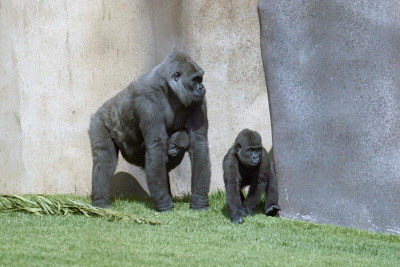A new, less expensive, and faster method now has been developed and used to determine the DNA sequence of the male-specific Y chromosome in the gorilla. The technique will allow better access to genetic information of the Y chromosome of any species and thus can be used to study male infertility disorders and male-specific mutations. It also can aid in conservation genetics efforts by helping to trace paternity and to track how males move within and between populations in endangered species, like gorillas.
A paper describing the method and the discovery resulting from its use in comparing the sequence of the gorilla Y chromosome to the sequences of the human and chimpanzee Y chromosomes is published in the journal Genome Research. The article also will be published in the April 2016 print issue of the journal. “Surprisingly, we found that in many ways the gorilla Y chromosome is more similar to the human Y chromosome than either is to the chimpanzee Y chromosome,” said Kateryna Makova, the Francis R. and Helen M. Pentz Professor of Science at Penn State and one of two corresponding authors of the paper. “In regions of the chromosome where we can align all three species, the sequence similarity fits with what we know about the evolutionary relationships among the species — humans are more closely related to chimpanzees. However, the chimpanzee Y chromosome appears to have undergone more changes in the number of genes and contains a different amount of repetitive elements compared to the human or gorilla. Moreover, a greater proportion of the gorilla Y sequences can be aligned to the human than to the chimpanzee Y chromosome.”
Read more at: http://archaeologynewsnetwork.blogspot.com/2016/03/new-method-reveals-high-similarity.html#.VtxA6eYt5eQ


